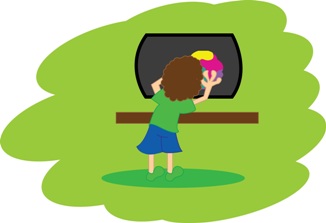Interactivity in children's entertainment

This research was conducted within the framework of interactivity in the offer of cross-media child contents in terrestrial digital television (TDT) and Internet, aiming to explore the interlocution that takes place between the interactive offers present in digital medias produced for kids, presenting Super3—a thematic channel for children and multiplatform—as case study.
The objectives of the research are: 1) identify the interactivity offer present in Super3 proprietary cross-media content in TDT and Internet; 2) establish the interactivity offer implicit in the production of such contents; 3) characterize the children interlocution with the identified offer; 4) contribute to the current discussion dealing with the interlocution that children, in the 8 to 14 years demographics, might have to interactivity offers.
The theoretical and conceptual referents used are related with: the cultural convergence in the symbolic-cultural transformations sense of the consumption ways (active participation of the consumer) and media production (amplification of that participation); the production and distribution of cross-media contents available in different platforms; theories of active reception that emphasize the participative role of audiences, users, consumers or interlocutors; and the hypermedia theory that favors the elements of participation and collaboration through text that arise from the consumption/production of digital interactive content.
The methodology use is focused in the qualitative approach, in order to develop a type of exploratory research based in the single-case study (Super3) with embedded analysis units (Info K and Tags). The information was collected from contents available in the TDT and Internet platforms, production and distribution of such contents, and children as potential audience; using the following research techniques: qualitative analysis of contents, interview and focal groups.
The major contributions of this research are the awareness of the different existing content characteristics; the conception and professional practices that involve the content producers and the relations established with children. This research advanced in the identification of styles, kinds or interlocution types within the interactivity. In that sense, emerging categories are presented, regarding controlled or open interactivity, in the offer, and about controlled or open interlocution, in the consumption stage. These categories contribute to the comprehension of the phenomenon in a qualitative approach and adjusted to the practices and relations that nowadays take place in children demographics.
References
"Interactividad en la oferta de contenidos infantiles cross-media para TDT e Internet: el caso de Super3", Andrea Lafaurie Molina's doctoral thesis in the Department of Audiovisual Communication and Advertising.


